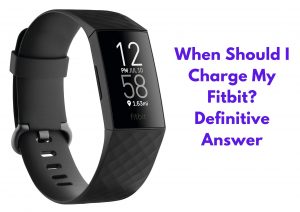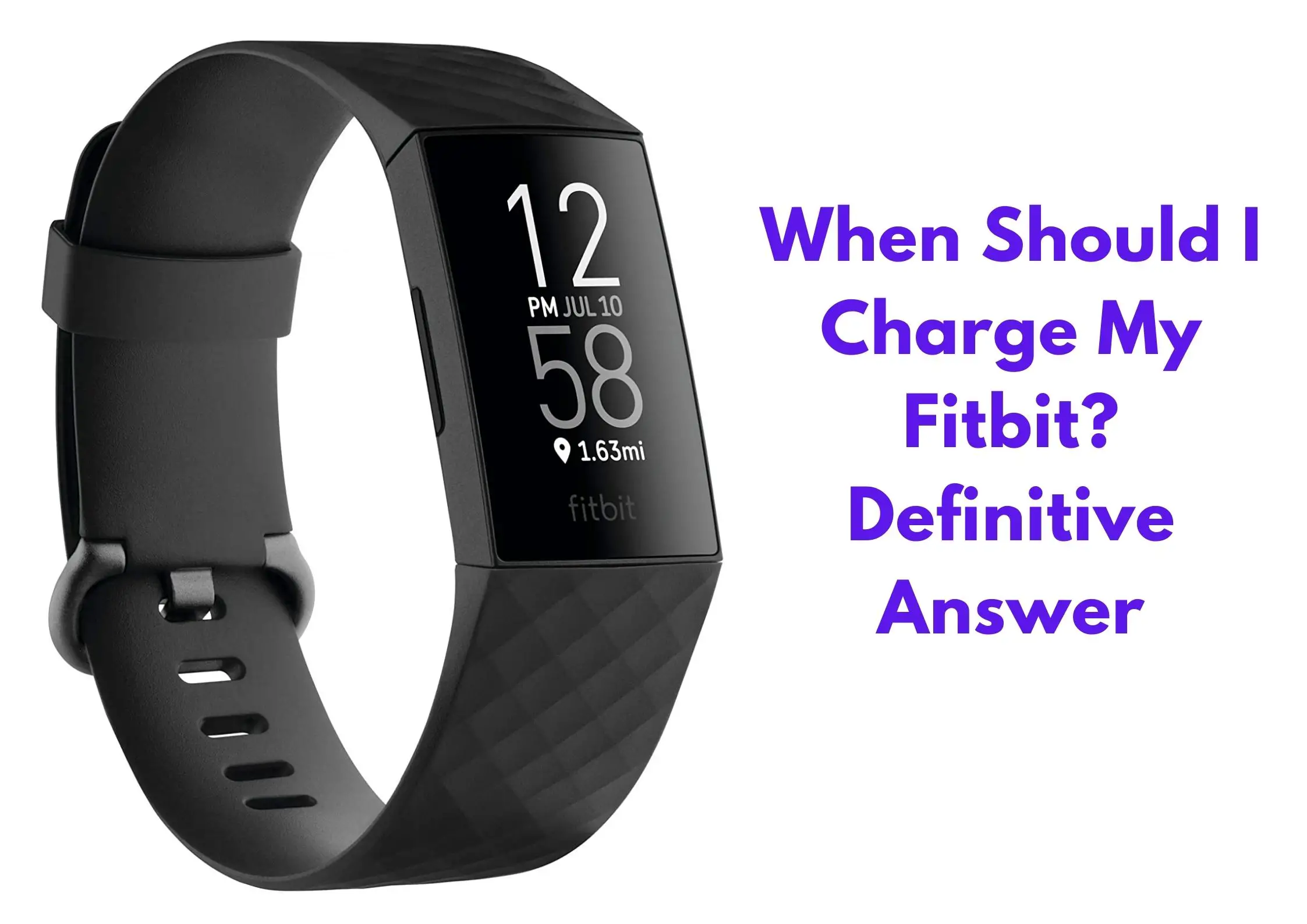Fitbit’s trackers come with decent batteries that allow you to keep track of your exercise, heart rate, steps, and weight, among other crucial activities.
However, in order to view your progress every minute, you need to keep your device charged at all times. Here’s how you should charge your Fitbit and increase the battery life.
Table of Contents
So, When Should I Charge My Fitbit?
This is an important question, and when to charge your Fitbit depends on what type of Fitbit you have (varying battery life) and how you use it (do you switch off some of the features sometimes?).
Another factor that will affect when to charge your Fitbit is your daily activities. You should charge it when you are not active. For instance, you can charge the Fitbit when you are watching TV or when reading emails on your computer. This way you won’t miss important data.
Related: Best Fitbit for Women
How Do I Charge My Fitbit
You can charge your Fitbit using a USB port on a UL-certified USB wall charger or a computer, or any other gadget with low energy. You’ll need to attach the other end of the USB cable to your Fitbit gadget. Allow the device to charge to 100%, which will take a minimum of two hours.
To extend the Fitbit’s battery life, you should charge it to 100% before using it. Additionally, you can increase its battery life by minimizing the use of some features in the gadget and preventing the screen from turning on any time you turn your wrist.
How long does it take to Charge a Fitbit?
You need at least two hours for your Fitbit gadget to be fully charged. However, this depends on the charging system you’re using. If your Fitbit device isn’t near a full drain, it may take an hour or less to be fully charged.
Related: Best Fitbit for Men
Why does it take long for Fitbit to Be Fully Charged?
Fitbit batteries are supposed to keep the charge for an extended period of time. This is why you need at least two hours before your gadget is fully charged.
How Long Does a Fitbit Hold Charge?
Most Fitbit gadgets are designed to be worn continuously for up to 5 days without charging. They will remind you when it’s time to recharge using flashing LED lights, on-screen battery icons, or audio prompts.
How Do I Know My Fitbit is charging?
To charge your Fitbit, plug your cable into any USB charging device. To know your Fitbit is charging, you’ll notice a battery indicator on the screen, which you can check at any time by pressing the button.
How Do I Know When My Fitbit is Fully Charged?
In some devices, you’ll see a solid battery icon when the device is 100% charged. In others, a solid battery icon with a smile appears when the Fitbit is fully charged, while some have a green battery icon.
Should I Let My Fitbit Battery Die?
Don’t wait for the battery to die before you recharge your Fitbit. This messes up the device’s battery life. If you want to get the best out of your Fitbit device, you should always keep it on and turn off the features you don’t need.
Why is My Fitbit Battery Draining Fast?
If you enable all-day sync in your Fitbit device to your computer or mobile device, it will drain your battery faster. The best way to increase the battery life is by turning off the All-Day Sync.
Can I Change the Battery of My Fitbit?
If you replace your Fitbit battery with a TAE replacement, you’ll expect up to four days of battery life. Just pop off the back cover, and you will access the Fitbit’s battery. Fix the new battery to the existing wiring.
Can I Charge my Fitbit Without a Charger?
Yes, it’s possible. You can use a USB adapter to plug into any device with low power output. However, some USB cables may charge slower than others.
Tips to Extend Your Fitbit’s Battery Life

- Switch off the All-Day Sync to save up to 24 hours of battery life. Luckily, you can manually sync to keep yourself up to date.
- Use the Fitbit app instead of manually syncing every minute.
- You can turn off the Quick View which can add up to 24 hours of battery life.
- The Android app has an Always Connected feature which strengthens the Bluetooth connectivity between your Fitbit and phone. Turn it off to increase the battery life since it drains the battery faster.
- Turn off some notifications that you don’t need.
- Turn off the Reminders To Move. Although this is a crucial feature, it will add a few minutes of battery life. Alternatively, you can adjust this setting to turn on when you are walking.
- Avoid checking your Fitbit so often. Every time you turn on the screen, the battery loses some charge. If you charge regularly, you don’t have to worry about this.
- Reduce the brightness of your Fitbit device. Go to the Brightness setting.
- Turn off Phone GPS or Connected GPS if they are not in use.
- Reduce the number of alarms and leave the most important ones.
- Finally, the best battery saver is to switch off the Fitbit. If the device is low on battery and you aren’t working out, then consider switching it off.
Conclusion
If you want your Fitbit device to serve you for a long time, you need to ensure it’s fully charged before using it. Additionally, you should avoid charging your device when storing it since it affects the gadget’s battery life.

